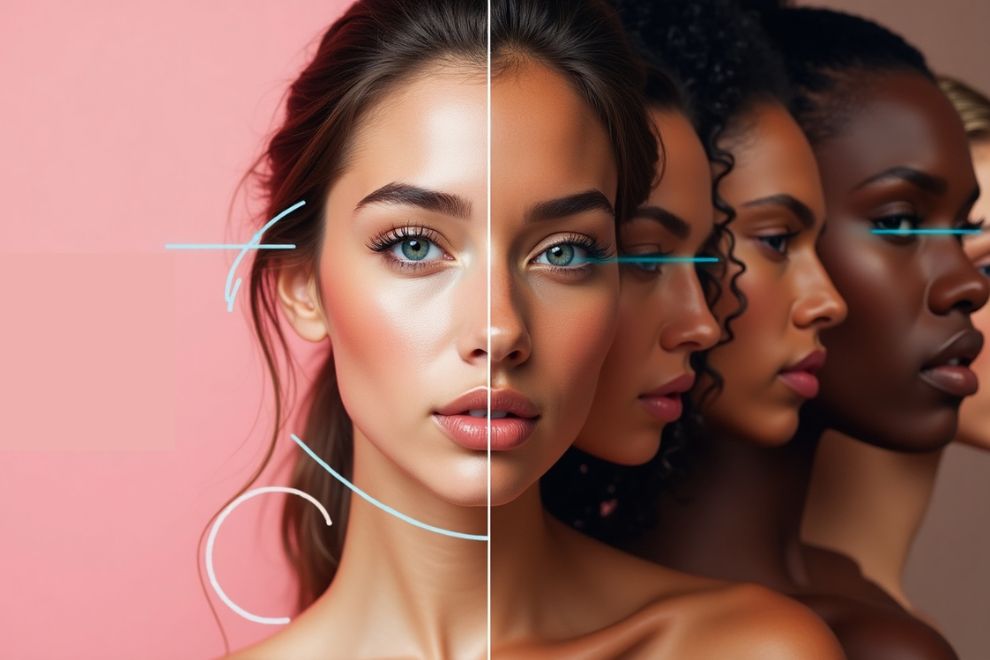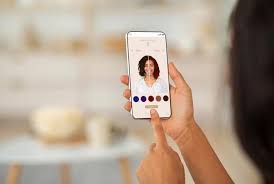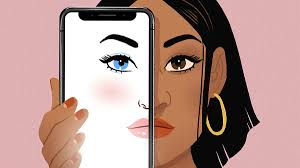In the age of selfies, stories, and reels, artificial intelligence has quietly embedded itself into our everyday visuals—particularly through beauty filters. What began as fun face-altering tools on Snapchat has now evolved into powerful AI-driven filters on platforms like Instagram, TikTok, and even Zoom. These filters can change facial structures, smooth skin, add makeup, reshape features, and even generate entirely new faces—all in real time.
But as AI filters become more convincing and widespread, they’re also transforming how we perceive beauty, both in ourselves and in others. The question is no longer whether they are influencing beauty standards—it’s how deeply they already have.
The New Face of Perfection
AI filters are designed to enhance or idealize our appearance by making subtle or dramatic changes to our facial features. Popular filters tend to:
- Smooth skin texture and remove blemishes
- Slim the nose and jawline
- Enlarge eyes and lips
- Lighten or even out skin tone
- Add makeup or digital enhancements
The result? A hyper-real version of yourself that looks like a mix between a beauty influencer and a CGI model.

These enhancements are often subtle enough to appear “natural” but striking enough to make you prefer the filtered version of yourself. Over time, this shifts our internal standards of what we consider beautiful, even desirable. When AI-enhanced faces become the norm online, real-life, unfiltered faces may start to feel “less than.”
Filtered Reality and Mental Health
There’s growing concern that AI filters contribute to worsening body image and self-esteem, particularly among younger users. Studies have shown a link between frequent filter use and increased feelings of inadequacy. Many users begin to compare their real appearance to their filtered selves—and come up short.
The psychological effect is profound. Some people experience a kind of detachment from their real appearance, a phenomenon psychologists are now calling “filter dysmorphia” or “Snapchat dysmorphia.” Cosmetic surgeons even report that clients are bringing filtered selfies to consultations, asking to look like their edited online personas.
This disconnect can fuel anxiety, depression, and low self-worth. And because social media is a primary way people connect and communicate, there’s added pressure to always look “perfect” on screen—creating a dangerous feedback loop.

A Narrower Ideal of Beauty
One of the most troubling aspects of AI filters is their tendency to reinforce narrow and often Eurocentric beauty ideals. Many filters lighten skin tone, slim down noses, and enlarge eyes—subtle cues that promote a specific aesthetic standard.
The result is a kind of visual homogenization, where everyone starts to look the same. The so-called “Instagram face”—with plump lips, high cheekbones, and flawless skin—has become a global phenomenon, making unique or culturally diverse features feel less represented or valued.
This lack of diversity in filters can be particularly harmful for people of color or those with features that don’t align with mainstream ideals. It sends the message, consciously or not, that beauty must conform to a certain mold to be considered valid or attractive.
Are Filters All Bad?
Not entirely. AI filters can be fun, creative, and even empowering. They offer a digital canvas for self-expression, costume play, or experimenting with styles and identities. For some, they provide confidence or a sense of playfulness in front of the camera.
Moreover, filters have driven innovation in augmented reality and AI technology. Brands, artists, and creators are using them in new and exciting ways—from virtual makeup trials to immersive storytelling.
The issue arises when filters are used not for fun, but for masking, comparing, or competing. When they become the default way people present themselves online, we lose touch with authenticity—and more importantly, with self-acceptance.

What Can We Do?
As AI filters continue to evolve, so should our awareness and responsibility around them. Here are a few steps we can take:
- Digital Literacy Teach users—especially teens and children—how filters work and how they can distort perception. Encourage critical thinking about what they see online.
- Transparency Social platforms could label filtered or AI-altered content to help users distinguish between real and enhanced visuals.
- Celebrate Diversity Developers should create more inclusive filters that reflect a wider range of skin tones, facial features, and styles. Representation matters, even in augmented reality.
- Limit Dependency Challenge yourself and others to occasionally post or interact without filters. Normalize authenticity.
Conclusion: Reclaiming Real Beauty
The rise of AI filters is reshaping the definition of beauty in ways that are both subtle and sweeping. They blur the line between enhancement and deception, between confidence and insecurity. While these tools have the potential for creativity and fun, they also come with serious implications for how we see ourselves—and each other.
As users and creators, we have a choice. We can continue chasing perfection through filters, or we can start redefining beauty on our own terms: imperfect, diverse, and real. Because true beauty shouldn’t require an algorithm.
